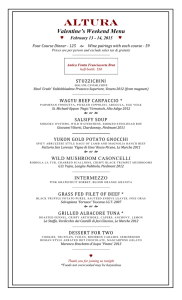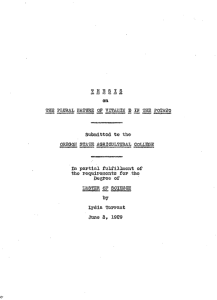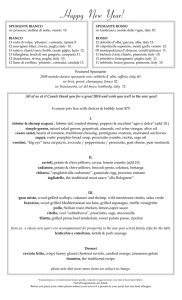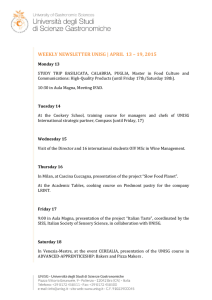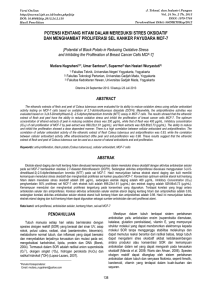abstrak
advertisement
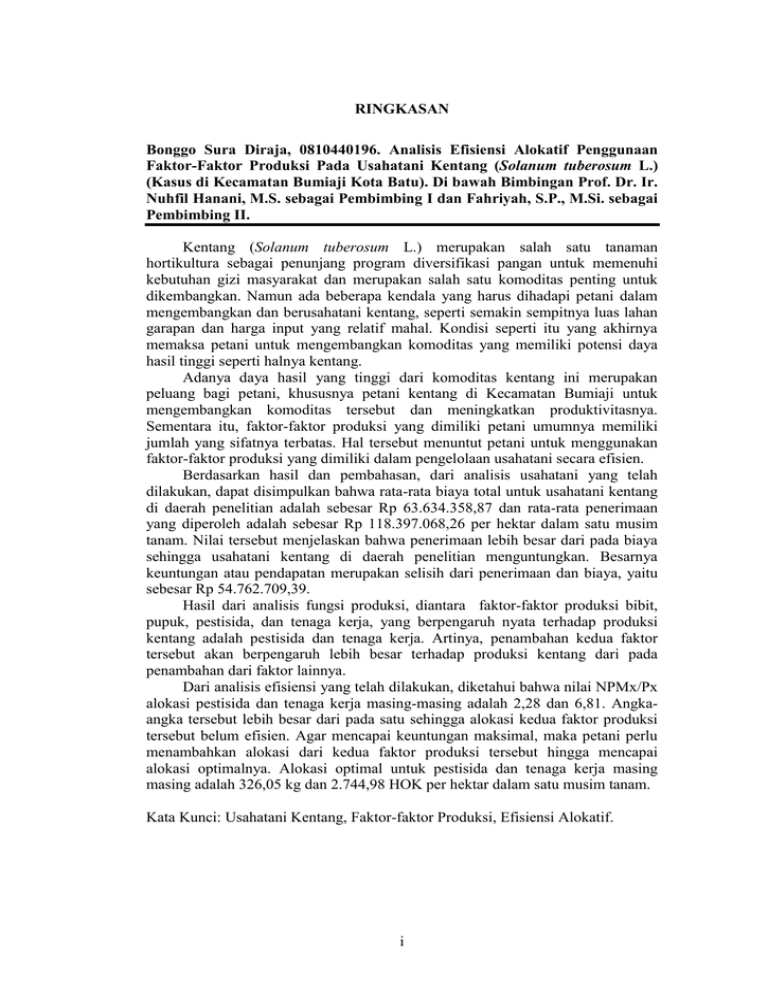
RINGKASAN Bonggo Sura Diraja, 0810440196. Analisis Efisiensi Alokatif Penggunaan Faktor-Faktor Produksi Pada Usahatani Kentang (Solanum tuberosum L.) (Kasus di Kecamatan Bumiaji Kota Batu). Di bawah Bimbingan Prof. Dr. Ir. Nuhfil Hanani, M.S. sebagai Pembimbing I dan Fahriyah, S.P., M.Si. sebagai Pembimbing II. Kentang (Solanum tuberosum L.) merupakan salah satu tanaman hortikultura sebagai penunjang program diversifikasi pangan untuk memenuhi kebutuhan gizi masyarakat dan merupakan salah satu komoditas penting untuk dikembangkan. Namun ada beberapa kendala yang harus dihadapi petani dalam mengembangkan dan berusahatani kentang, seperti semakin sempitnya luas lahan garapan dan harga input yang relatif mahal. Kondisi seperti itu yang akhirnya memaksa petani untuk mengembangkan komoditas yang memiliki potensi daya hasil tinggi seperti halnya kentang. Adanya daya hasil yang tinggi dari komoditas kentang ini merupakan peluang bagi petani, khususnya petani kentang di Kecamatan Bumiaji untuk mengembangkan komoditas tersebut dan meningkatkan produktivitasnya. Sementara itu, faktor-faktor produksi yang dimiliki petani umumnya memiliki jumlah yang sifatnya terbatas. Hal tersebut menuntut petani untuk menggunakan faktor-faktor produksi yang dimiliki dalam pengelolaan usahatani secara efisien. Berdasarkan hasil dan pembahasan, dari analisis usahatani yang telah dilakukan, dapat disimpulkan bahwa rata-rata biaya total untuk usahatani kentang di daerah penelitian adalah sebesar Rp 63.634.358,87 dan rata-rata penerimaan yang diperoleh adalah sebesar Rp 118.397.068,26 per hektar dalam satu musim tanam. Nilai tersebut menjelaskan bahwa penerimaan lebih besar dari pada biaya sehingga usahatani kentang di daerah penelitian menguntungkan. Besarnya keuntungan atau pendapatan merupakan selisih dari penerimaan dan biaya, yaitu sebesar Rp 54.762.709,39. Hasil dari analisis fungsi produksi, diantara faktor-faktor produksi bibit, pupuk, pestisida, dan tenaga kerja, yang berpengaruh nyata terhadap produksi kentang adalah pestisida dan tenaga kerja. Artinya, penambahan kedua faktor tersebut akan berpengaruh lebih besar terhadap produksi kentang dari pada penambahan dari faktor lainnya. Dari analisis efisiensi yang telah dilakukan, diketahui bahwa nilai NPMx/Px alokasi pestisida dan tenaga kerja masing-masing adalah 2,28 dan 6,81. Angkaangka tersebut lebih besar dari pada satu sehingga alokasi kedua faktor produksi tersebut belum efisien. Agar mencapai keuntungan maksimal, maka petani perlu menambahkan alokasi dari kedua faktor produksi tersebut hingga mencapai alokasi optimalnya. Alokasi optimal untuk pestisida dan tenaga kerja masing masing adalah 326,05 kg dan 2.744,98 HOK per hektar dalam satu musim tanam. Kata Kunci: Usahatani Kentang, Faktor-faktor Produksi, Efisiensi Alokatif. i SUMMARY Bonggo Sura Diraja, 0810440196. Allocative Efficiency Analysis of Production Factors Usage In Potato (Solanum tuberosum L.) Farming (Case in Bumiaji District, Batu City). Under the guidance of Prof. Dr. Ir. Nuhfil Hanani, M.S. as supervisor I and Fahriyah, SP, M.Si. as supervisor II. Potato (Solanum tuberosum L.) is one of the horticultural crops as a diversification program supporting food to meet nutritional needs of the community and is one of the essential commodities to be developed. But there are several obstacles that must be faced by farmers in developing and potato farming, such as the limited area of arable land and input prices are relatively expensive. Such conditions that ultimately forced the farmers to develop a commodity that has the potential for high yield as well as potatoes. Because of the high yield of potato commodities is an opportunity for farmers, especially potato farmer in Bumiaji District, to develop the commodity and increase productivity. Meanwhile, the factors of production are owned by farmers generally have a limited amount of that nature. It requires farmers to use factors of production are owned in the management of farm efficiently. Based on the results and discussion, from the farm analysis has been done, it can be concluded that the average total cost for potato farming in the study area is Rp 63,634,358.87 and the average revenue obtained is Rp 118,397,068.26 per hectare in one cropping season. This value is explained that the revenue is higher than the cost of making potato farming profitable in the study area. The amount of profit or revenue represents the excess of revenues and costs, amounting to Rp 54,762,709.39. The results of production function analysis, among the factors of production, seed, fertilizer, pesticides, and labor, which significantly affect potato production is pesticides and labor. So, the addition of these two factors will affect the production of potatoes is greater than the addition of other factors. Based on efficiency analysis has been done, it is known that the value NPMx/Px, the allocation of pesticides and labor, respectively 2.28 and 6.81. The numbers are bigger than 1 so that the allocation of production factors are inefficient. In order to achieve maximum profit, the farmers need to add pesticide and labor allocation of production factors to achieve optimal allocation. Optimal allocation of pesticide and labor for each are 326.05 kg and 2,744.98 HOK per hectare in one cropping season. Keywords: Potato Farming, Production Factors, Allocative Efficiency.
